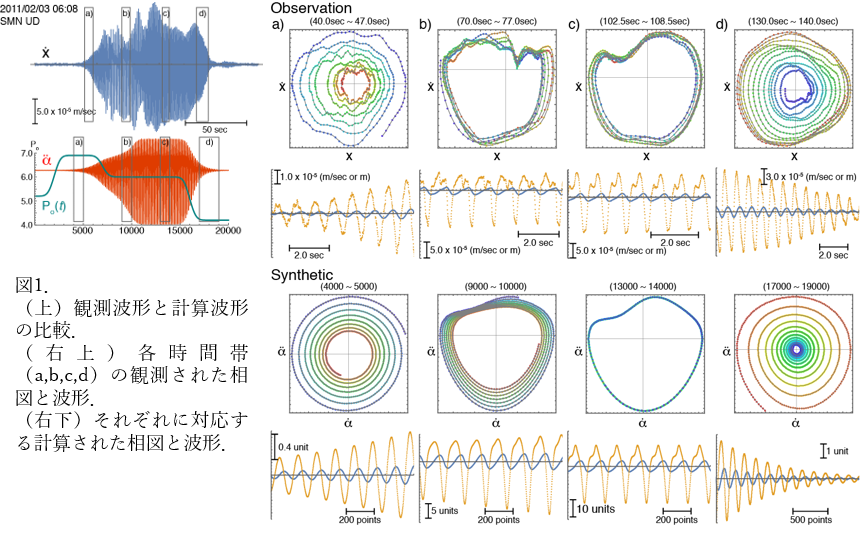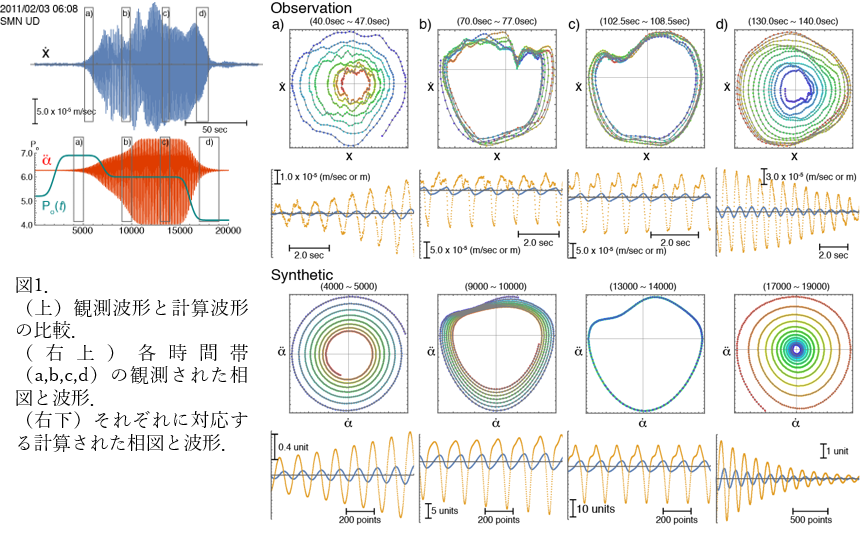Minoru Takeo (emeritus professor)
Geophysical Journal International, Volume 224, Issue 3, March 2021, Pages 2100–2120, https://doi.org/10.1093/gji/ggaa477
SUMMARY
The Shinmoe-dake volcano started with three sub-Plinian eruptions from 26 to 27 January 2011, followed by a magma effusive stage from 28 to 31 January 2011, and Vulcanian eruptions occurred frequently during 1 to 10 February 2011. During the magma effusive and Vulcanian stages, multiple episodes of harmonic tremors were observed at stations near the summit crater. Although harmonic tremors have been observed at various volcanoes worldwide, the source mechanism remains poorly understood. This paper proposes a source model for harmonic tremors, which is composed of a non-linear viscous fluid flow in a flexible channel. A simple lumped parameter model is used to consider the process. The dynamics are described by a third-order system of ordinary differential equations using model variables for a cross-sectional area of the constricted segment and the fluid velocities in the upstream and downstream tubes. This model produces various kinds of trajectories for self-sustained oscillations that change the reservoir pressure connected on the upstream channel of the model. Linearization analysis around the stationary point and global analysis using nullcline planes reveal the mechanism of self-sustained oscillations of the system qualitatively. To consider both the frequency peaks of the harmonic tremor and the characteristics of observed phase spectra, the qualitative characteristics of an observed phase portrait are compared to those of a simulated one. This tremor model simulates the frequency peaks and the phase portraits of typical harmonic tremors observed during the 2011 Shinmoe-dake eruption. Because this model involves several geometrical configuration parameters, it has the potential to reveal the source mechanism of various kinds of harmonic tremors.



